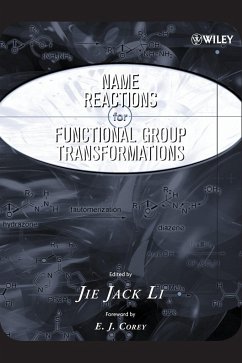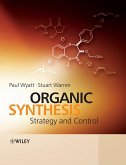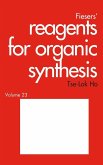Functional group transformations form the heart of organic synthesis, with one functional group present in the starting material transformed into a different functional group in the product. For purposes of this book, this includes oxidations, reductions, asymmetric transformations, and other functional group manipulations that are name reactions. Widespread applications of these reactions are used in the pharmaceutical, fine chemical, polymer, and ag/biotech industries.
A survey of important transformations that are representative of the whole range of functional groups
This comprehensive reference delves into the details of name reactions that are important to researchers. It presents an up-to-date account of forty-seven major classes of functional group transformations and also serves to interconnect them. The book includes reviews from leading scientists in their specialty areas--all organized uniformly, making it easy to access information.
Topics are organized into the following sections:
_ Asymmetric synthesis
_ Reduction
_ Oxidation
_ Olefination
_ Amine synthesis
_ Carboxylic acid derivatives synthesis
_ Miscellaneous functional group manipulations
Each section includes a description of:
_ The functional group transformation
_ Mechanisms
_ Synthetic utilities and applications for the reaction
_ References to the primary literature
_ The historical perspective
_ Variations andimprovementon the reaction
_ Experimental details
With nineteen contributors from academia and industry, some of whom discovered the reactions they describe, Name Reactions for Functional Group Transformations is a state-of-the-art resource for organic and medicinal chemists conducting research in industries such as pharmaceuticals, fine chemicals, ag-biotech, and polymers, as well as for graduate students in organic chemistry. It is an ideal companion to the first volume of this series, Name Reactions in Heterocyclic Chemistry.
A survey of important transformations that are representative of the whole range of functional groups
This comprehensive reference delves into the details of name reactions that are important to researchers. It presents an up-to-date account of forty-seven major classes of functional group transformations and also serves to interconnect them. The book includes reviews from leading scientists in their specialty areas--all organized uniformly, making it easy to access information.
Topics are organized into the following sections:
_ Asymmetric synthesis
_ Reduction
_ Oxidation
_ Olefination
_ Amine synthesis
_ Carboxylic acid derivatives synthesis
_ Miscellaneous functional group manipulations
Each section includes a description of:
_ The functional group transformation
_ Mechanisms
_ Synthetic utilities and applications for the reaction
_ References to the primary literature
_ The historical perspective
_ Variations andimprovementon the reaction
_ Experimental details
With nineteen contributors from academia and industry, some of whom discovered the reactions they describe, Name Reactions for Functional Group Transformations is a state-of-the-art resource for organic and medicinal chemists conducting research in industries such as pharmaceuticals, fine chemicals, ag-biotech, and polymers, as well as for graduate students in organic chemistry. It is an ideal companion to the first volume of this series, Name Reactions in Heterocyclic Chemistry.
"Unlike many previous books on name reactions, which present many reactions but treat them superficially, this book provides an excellent selection of useful name reactions, which have been given in depth, well-illustrated, instructional, and well-referenced accounts." ( Journal of Medicinal Chemistry , February 2008)
"Helps you explore how you think, communicate and react, allowing you to change your behaviours and become a more expert professional practitioner." ( Journal of Perioperative Practice , April 2008)
"Reading this book has been enjoyable experience. Again and again, one comes across surprising reaction possibilities of well-known reagents, or some lesser known variants of common transformations." ( Angewandte Chemie )
"This book provides an excellent selection of useful name reactions, which have been given in depth, well-illustrated, instructional, and well-referenced accounts." ( Journal of Medicinal Chemistry , January 11, 2008)
"Helps you explore how you think, communicate and react, allowing you to change your behaviours and become a more expert professional practitioner." ( Journal of Perioperative Practice , April 2008)
"Reading this book has been enjoyable experience. Again and again, one comes across surprising reaction possibilities of well-known reagents, or some lesser known variants of common transformations." ( Angewandte Chemie )
"This book provides an excellent selection of useful name reactions, which have been given in depth, well-illustrated, instructional, and well-referenced accounts." ( Journal of Medicinal Chemistry , January 11, 2008)








